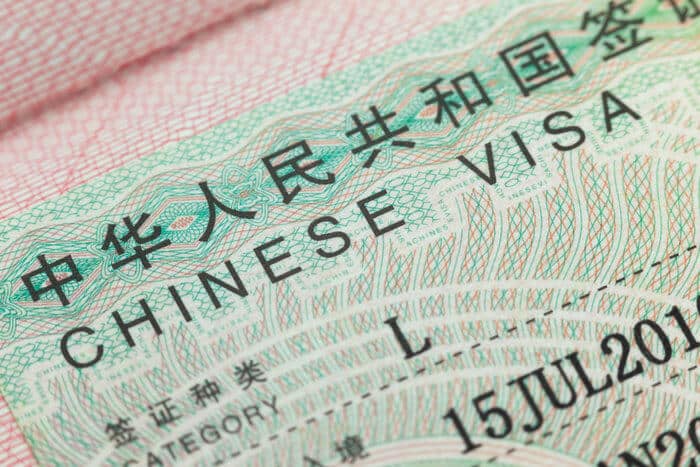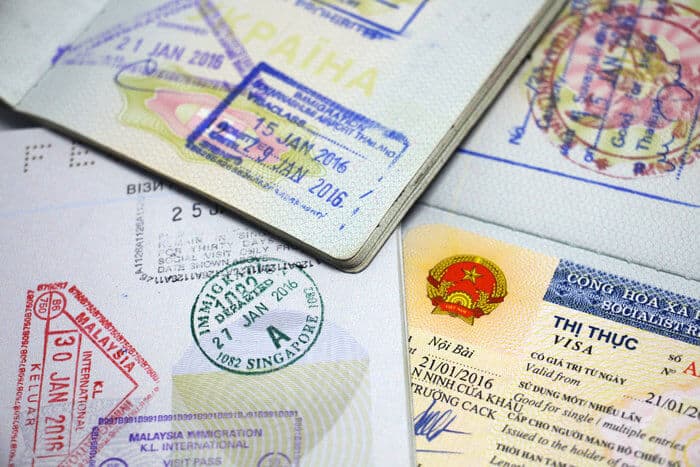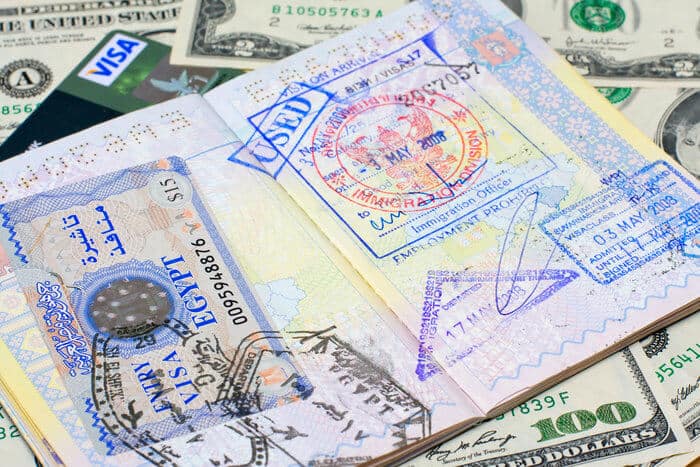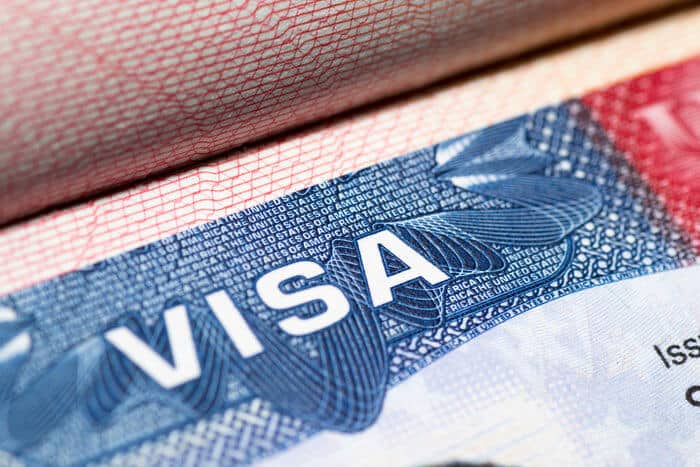What Is Visa-Free Travel and How to Use It
October 31, 2024
This article discusses visa-free travel, its benefits, and its role in creating a diverse passport portfolio and holistic offshore strategy.
When most people think about passports, visa-free travel is one of the first things that come to mind. Most passport rankings, like the Henley Passport Index and the Arton Passport Index, focus on visa-free travel to determine a passport’s power.
We, however, take a different approach. Nomad Passport Index judges a passport’s strength on five factors – taxation, dual citizenship, travel, freedom, and perception.
When you only look at travel, the concept of getting second citizenship as a Westerner makes no sense since US, UK, Australian and other Western citizens can go almost anywhere visa-free.
So why get a second passport?
When you take a holistic view, you understand that a second passport is the best Plan B to insure yourself against the ever-changing regulations. It also introduces you to new investment opportunities, places, and wealth-generation tools.
So what are you waiting for? Get started on your journey of acquiring a second passport and rest easy knowing that your future is secure – financially and otherwise.
What is Visa-Free Travel?
Visa-free travel seems relatively straightforward – it’s the ability to enter a country without obtaining a visa in advance.
If you have a US passport, for example, you’ll need to get a visa to travel to places like China or Russia. You’ll have to apply, send your passport to your local consulate, and pay a fee to receive your visa.

However, you don’t need to go through this process for countries like Canada or France. You simply arrive, go through customs, and get your passport stamped.
Certain countries have agreements with other countries that allow their citizens to travel there without requiring lengthy visa procedures.
Regular visa-free travel allows travellers to move freely across borders with their passports.
While you usually don’t need more than a passport to clear customs in most visa-free countries, certain countries may request other documents, such as proof of onward travel, before allowing you to enter.
Thailand – a popular backpacking destination – is known for asking visa-free travellers for proof of funds and onward travel.
However, these requirements are usually easy to meet and loosely applied.
In Thailand, you only need a ticket out of the country and a little over US$600 in your bank account, and whether or not Thai immigration asks for these extra documents depends on the officer you encounter.
In some countries, you may also have to pay some kind of airport or departure tax even if you travel there visa-free.
Certain airports in the Philippines charge around US$11 in tax, and Costa Rica charges a departure tax as well.
But again, these taxes are usually fairly negligible, and you don’t need to pay them in advance.
While you may need to prepare a few things in advance, visa-free travel generally allows you to arrive at immigration and pass through with little hassle.
Visa on Arrival and E-Visas
In addition to regular visa-free travel, your passport may also give you access to expedited visa processing in countries where you do not have visa-free travel.
Sometimes, you can get a visa on arrival where you apply for and receive a visa at a port of entry, or you can obtain a visa easily online.
Visa on Arrival
While visa-on-arrival isn’t technically visa-free travel, it only adds a few steps to the process.
For example, if you’re a US citizen travelling to the UAE, you’ll need to get a visa on arrival for the UAE.
Depending on where you land, you either go in the same line as visa-free travellers or you go to a separate line where you wait a few minutes longer. You then fill out paperwork, pay a fee, and immigration will process you and let you through.

Getting a visa on arrival can be a bit more expensive and paperwork-intensive than visa-free travel, but in most places, it’s not that much more difficult.
Cambodia, for example, has one of the fastest visa-on-arrival processes in the world.
When you arrive at immigration, you step up to the counter, and they take your passport as you fill out a five-question form. You then pay them $30 for a tourist visa or US$35 for a business visa, which you can then use to apply for a one-year business residency.
Then, in just a couple of minutes, you retrieve your passport from the other end of the counter, visa in hand.
This easy process is why Cambodia is perhaps the easiest place to get a second residence in the world.
While Cambodia’s visa-on-arrival system is exceptionally efficient, the process in Cambodia is similar to what you will encounter in most visa-on-arrival countries.
Some countries, however, can be a bit more difficult with the visa-on-arrival process.
For the most part, however, visa on arrival is similar to visa-free travel – you just need to wait in a special line and pay a fee.
E-Visas
E-visas are another way governments can expedite the visa process for citizens of certain countries.
When you get an e-visa, you simply apply online, pay a fee, and arrive at the border.
Australia, for example, uses an e-visa system called an ‘Electronic Travel Authorisiation’ or ETA. Citizens of countries like the US and Japan can complete this e-visa application for tourist or business visas, pay US$81.99 to US$133.99 for processing, and arrive in Australia with little hassle.
Occasionally, you may encounter more difficult e-visa processes. India’s e-visa process is exceptionally confusing, and one wrong click can send you back to square one.
In general, however, e-visas are basically like visa-free travel with an extra step and an extra fee.

Why is Visa-Free Travel Important?
If you grew up as a citizen of a country with a strong passport, you might not realise the true value of visa-free travel until you decide to go somewhere where you need to apply for a visa – like China.
Visa-free travel allows you to travel to different countries without the hassle of going through the bureaucratic motions of getting a visa.
You don’t have to spend your time filling out forms, and you don’t have to go through the hassle of going to an embassy to turn in your passport and wait for approval.
Visa-free travel also allows you to travel on a dime if you want to.
Suppose you’re currently in Cambodia and want to go to China tomorrow. If you have Grenada citizenship by investment, you can use that passport to get visa-free travel to China.
However, if you’re traveling on a passport that doesn’t offer visa-free access to China, you’d need to apply at the embassy, and how fast you can get to China depends on how long the embassy takes to process your visa.
Some embassies have a pretty quick turnaround, while others may take a bit longer.
China’s visa process is known for being hard to navigate, but the Chinese government has tried to make it a bit easier for foreigners to get visas.
In fact, many countries worldwide are actively trying to simplify their visa processes.
However, that’s not the case everywhere. The US is currently trying to make it harder for everyone to get visas, and embassy workers even get bonuses when they deny people. The same goes for Russia.
The major benefit of visa-free travel is that it gives you access to different countries without the trouble of going through time and money-consuming visa processes.
Why Visa-Free Travel Isn’t That Important
There’s no doubt that visa-free travel is incredibly convenient.
However, in our opinion, it’s a bit overrated.
When the Nomad Capitalist CEO, Andrew Henderson, tells people he renounced his US citizenship, many are shocked because he gave up so much visa-free travel.
When you’ve been traveling with a US passport for most of your life, you might wonder how people get anywhere without the visa-free travel a US passport gives you.
However, even though he gave up his US passport, he only lost the ability to travel visa-free to about 18 countries.
What did he gain? A reduced tax bill, freedom from ever-restricting regulations, and the ability to travel visa-free to countries US citizens can’t travel to.

Many citizens of countries with ample visa-free travel often hold the misconception that if you don’t have as much visa-free travel, you’re stuck – but that’s simply not the case.
Even with lower-tier passports, there are plenty of countries that you can visit – with or without a visa.
Also, it’s up to you how you want to diversify your passport portfolio. With strategic planning and our help , you don’t need to lose visa-free travel to your favourite countries at all.
Here is why, in our opinion, visa-free travel is overrated:
Visa-Free Travel Isn’t Always Easy
Even if you have visa-free travel to a particular country, its immigration officials may not interpret it that way.
US citizens have visa-free access to most English-speaking countries, such as the UK and Ireland. However, officials from those countries have begun to scrutinise US citizens entering their borders more heavily.
Countries like Ireland and the UK have had issues with US citizens overstaying their visas or working illegally, so they’re spending more time scrutinising US citizens at the border.
Visa-Free Travel Only Matters if You Want to Go There
When you think of visa-free travel, you often think of it in numbers. How many countries can you travel to without needing a visa?
Now, of those countries, how many are you actually going to travel to?
Many people are afraid of giving up extensive visa-free travel because they fear that they’re missing out on something.
We understand this to some extent.

However, unless you plan to go absolutely everywhere, visa-free travel is only worthwhile for countries you will actually visit.
You Can Always Apply for Visas
Visa-free travel certainly makes the immigration process easier, but applying for visas isn’t terribly difficult if you must do so.
If you need to travel to the US, you can always go through the process of applying for an E-2 Visa. You can do the same in Canada or other Western countries that require visas.
It can be a bit of a hassle to get a visa through an embassy, but it’s not terribly difficult.
And, if you’re a US citizen who wants to renounce to get out of the US tax net, then giving up some visa-free travel may be worth paying less in tax.
What is Visa-Free Travel and How to Use it:
FAQs
Visa-free travel is organised via agreements between two countries, allowing their citizens to enter each other’s territories without the need for a visa.
According to our Nomad Passport Index , you can visit 117 countries visa-free with an American passport.
Anyone can apply for a digital nomad visa provided they meet the criteria for that document, which usually involves proving a minimum monthly income.
The Singapore passport allows you visa-free access to 130 countries, making it the most powerful, according to the Nomad Passport Index .
The Afghanistan passport allows you visa-free access to only three countries, making it the weakest, according to the Nomad Passport Index .
The Bottomline
While visa-free travel can make your life much easier, it isn’t the ultimate factor in curating a passport portfolio. Unless you are a digital nomad who plans to cross off every visa-free country on your list, you can also live pretty well with a low-tier passport.
Moreover, when you add benefits like a reduced tax bill and increased opportunities, a low-tier passport doesn’t sound bad at all.
At the end of the day, it all depends on your personal preference and situation. If you want to renounce your citizenship but are afraid to lose your visa-free travel privileges, get in touch with us today. We can help you navigate through the process of acquiring second citizenship in a way that best suits your goals.


Is Grenada Safe for Visitors, Residents and Families?
Evaluating a nation for tourism, relocation or investment begins with a single, non-negotiable factor – safety. Security, from both a personal and financial point of view, is the foundation upon which all other considerations rest. And while it’s easy to assume that stability is a given in the developed world, recent challenges in countries like […]
Read more

Is Antigua Safe for Tourists, Families and New Residents?
Security is a cornerstone of any serious investment migration strategy. For high-net-worth individuals (HWNIs) and globally mobile families, it ranks alongside tax efficiency, political stability, and quality of life as a key driver in deciding where to live, invest or acquire a second passport. Too often, safety is assumed to align with economic development. Countries […]
Read more

Is St Kitts and Nevis Safe? Tips for Tourists and Residents
Safety is a non-negotiable factor for anyone considering whether a country is right for travel, relocation or investment. Overlooking such a vital consideration carries serious consequences, and the stark truth is that assumptions based on a country’s global image often fall short of reality. Cases in point include the following countries: The takeaway is clear: […]
Read more




